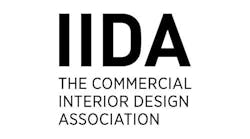Earlier this year, attendees at IIDA’s celebrated Industry Roundtable shared a compelling conversation about the future. This 25th annual think tank brings together many of the industry's brightest minds—a broad cross-section of design experts who approach the world of design with thoughtfulness and a deep concern for humans and the spaces we inhabit. We considered the future across a multiplicity of design realms: healthcare, hospitality, retail and of course the workplace and how design can enable and impact not only the spaces in which we work, but the nature of work itself.
As we explored the ways in which placemaking is becoming increasingly relevant, we reflected on work styles, commuting habits and what this means for the future of physical offices as well as the communities surrounding them. Below, I dive into my three key takeaways from our talks.
1. Blended Experiences
Designing for experience is relevant for both the “now” and the “next,” and this also applies to work. Creating meaningful experiences that draw on users' needs, feelings, contexts, and mindsets extends beyond designing an aesthetically pleasing space (which is still important): It also involves intentional customization including individualized lighting and tech, thoughtful consideration of neurodiversity as part of work style, and even reinvention of liminal spaces. “Space-fusion” is also of high importance when it comes to crafting blended experiences. Hospitality and retail-influenced meeting spaces, whether physical or digital, provide new and exciting opportunities to connect that can literally happen anywhere—from the comfort of a cozy interior to the immersive virtual space of the metaverse. With cross-industry influences, workplace design is morphing into a living-breathing organism that is inclusive, innovative, adaptable and future-looking.
2. Locally Specific Placemaking
Rethinking the ways our cities are planned and working toward shaping public spaces so that they harness the ideas and assets of the people who use them will, in turn, impact the workplace. The latest thinking about the relationship between the places where we live, work and play is already focused on the concept of “15-minute neighborhoods” (and the 5-minute neighborhood is not far behind.) Designers are already bringing the neighborhood to work, incorporating local services and brands (think bringing in a beloved local coffee shop, rather than automatically defaulting to national stalwarts such as Starbucks.) This not only supports the local economy, it showcases a philosophy of care that extends well beyond the office walls. Community and belonging are also at the core of the placemaking process. One of the most significant benefits of designing with placemaking in mind is a supportive work culture that fosters diversity of thought, encourages varied approaches to work and reinforces creativity.
3. Design that Builds Community
Which brings me to another key outcome: design that builds community is essential to both people and place. Integral to building a better future, a sense of community is now more important than ever. In a more dispersed world, our connections become ever more precious and design has the power to build those, creating strong, engaging and inclusive communities. As a result, our sense of belonging grows stronger every day both online and offline. Hence the workplace needs to become a safe place where people want to do more than work—where they’re willing and able to learn, socialize and connect.
To achieve the better future we all desire, we must put community front and center. Injecting new energy, resources and enthusiasm into the workplace is a prerequisite, and let’s not forget that the most successful and achievable visions for change stem from hope, optimism and compassionate communication.
As we explored visions of the future in our Industry Roundtable discussions, it was that optimism and compassion—inherent to design and designers—that reappeared in the foreground again and again. Though many important insights emerged, the foundational ability of designers to look forward, problem solve, and build something better led our community of design’s top thinkers to a common conclusion: We have a vital part to play in shaping the future we will all inhabit, and the energy and enthusiasm to tackle the challenges ahead. Together, we will bring that bright future to life.
Cheryl S. Durst, Hon. FIIDA is the executive vice president and CEO of IIDA.

